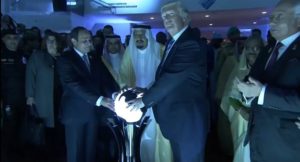




“Yemen is a war inside a war inside another war, right next to & overlapping several other wars” Me
“The Yemeni branch of al-Qaeda (AQ) is stronger than it has ever been. As the country’s civil war has escalated and become regionalised, its local franchise, al-Qaeda in the Arabian Peninsula (AQAP), is thriving in an environment of state collapse, growing sectarianism, shifting alliances, security vacuums and a burgeoning war economy. Reversing this trend requires ending the conflict that set it in motion. This means securing an overarching political settlement that has buy-in from the country’s diverse constituencies, including Sunni Islamists. As this will take time, steps must be taken now to contain AQAP’s growth……..” Crisis Group
“The attack (in Aden) struck troops loyal to the airport’s chief of security, who had refused to accept a government order that he be replaced. The incident was yet another sign of the inability of Yemen’s internationally recognized government to enforce order. But it was the first time its allies, the coalition of mostly Gulf Arab states, had intervened militarily in power struggles within the Yemeni armed forces. The Saudi-led coalition has launched thousands of air strikes against the government’s foes, the Iran-allied Houthis, in a campaign to restore President Abd-Rabbu Mansour Hadi to power. It helped wrest Aden from the Houthis, who control the capital, Sanaa, in the summer of 2015……….” Reuters
During his first week on the job White House spokesman Sean Spicer claimed that Iranian forces had fired missile at the US Navy from Yemen on the Red Sea. An un-truth, since there are no Iranian forces in Yemen: the only foreign forces in Yemen are with the Saudi coalition. Actually the Yemeni Houthis who control the capital and North Yemen had fired a missile (or was it a Yemeni drone that fired) at a Saudi warship that had been shelling their coastal towns. The Saudis claimed it was a suicide attack against one of their ‘peaceful warships’ (you don’t need to read Orwell to speak Orwellian).
This week, on Monday, President Trump had a lunch meeting with the Saudi Deputy Crown Prince Mohammed Bin Salman. He is the king’s son and widely expected future king, if his dad can swing it before he dies. He is also the minister of defense and architecture of the War on Yemen, a quagmire which just entered its third year. The Yemen war has enabled AQAP to expand in spite of American drone attacks. The war also introduced Islamic State (Daesh/ISIS) into Southern Arabia.
It is likely the Prince may have talked Trump into a more vigorous America role in the Saudi war on Yemen. Perhaps a more direct US role, this time not against the Jihadis, but against the coalition ruling most of Yemen. Which would be an act of desperation, since the Saudis have some of the best and most lethal American and British weapons and could not defeat the lightly armed Houthis and their allies ruling Sanaa. It would be just another never-ending Muslim war. Another twilight war.
The announcement indicated the Saudis will invest $ 200 billion in the United States (presumably new money). The prince also is quoted as having said that he supports the Muslim Travel Ban and that “Trump is a true friend of Muslims“. Such shameless groveling may indicate they got something from Trump: perhaps a promise to inch closer to the Mother of All Muslim Wars, a war of choice against Iran. That should be a doozy: it will certainly last through Trump’s tenure and will define his so-far unpromising legacy. The Prince may have gotten promises related to Syria, particularly Eastern Syria, or Iraq or Lebanon: risky promises the inexperienced Trump could have made in the absence of his secretaries of State and Defense.
As for Yemen, it is not “a” war, it is a complex set of parallel and intersecting wars. I once called it “a war inside a war inside another war, right next to & overlapping several other wars”. Now even the Saudi proxies (mostly Islah Muslim Brotherhood and allies) and the UAE proxies are fighting each other. You get into Yemen, you get involved in all these wars and sub-wars. You can’t pick and choose in such a battlefield.
And you get stuck, losing soldiers and money, a lot of money, just like the Saudis have for more than two years, so far. Like Afghanistan all over again, only a fiercer war.
Back to the promise of $200 billion Saudi investments. I am not sure they can afford this when they are cutting back on their domestic spending. Maybe by moving funds from their sovereign fund that SAMA manages. And can you imagine Donald Trump touting it in, say Tennessee or Alabama, bragging to his Muslim-challenged ‘base’ they he’s gotten Muslims (and Wahhabis at that) to pay out hundreds of billions?
Interesting times coming soon to a war theater far away from you.
Cheers
M. Haider Ghuloum








